| Modern readers who love Jane Austen are eager to find ways to acquit her of being a woman of the long 18th century. Clutching My Pearls is my ongoing blog series about my take on Jane Austen’s beliefs and ideas, as based on her novels. Click here for the first in the series. |
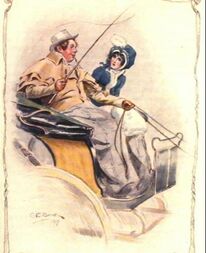 "'It's well hung." "Wait, what?"
"'It's well hung." "Wait, what?" The “subversive laughter” of the title refers to Heydt-Stevenson’s thesis that Austen’s novels, so genteel on the surface, are actually full of humorous sexual imagery which she included not only for its own sake but to subversively undermine the patriarchy.
That is my restatement of her thesis. In her own words, as stated in an article in Nineteenth-Century Literature: "Specifically, Austen's bawdy irreverence becomes part of a radical critique of courtship as she closes the gap between fallen women and proper ladies, critiques sensibility's ideological sentimentalization of prostitution, and undermines patriarchal modes of seeing."
Heydt-Stevenson finds many examples of sexual double entendre in Austen. I won't dispute her about Mary Crawford’s “rears and vices,” which sure looks like a sodomy joke, although it bewilders me that Austen would do that, but apparently even when Austen uses words like “make” and "known" and “tumble," she is hinting at sexual intercourse. (By the way, this post is not exactly g-rated)...
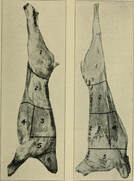
But what about context? What about taking your intended audience into consideration? When readers of Austen’s time consulted a cookbook and read, “Take a loin of mutton that has been well hung,” did they always snicker? When we hear the phrase “happy ending” used in relation to a fairy tale, it means that the prince is marrying Snow White. When we hear the phrase used in relation to The Garden of Eden Massage Parlor, it means something else.
We think of the past as a time when female sexuality was repressed, or it was denied that women had sexual urges at all (with some exceptions, as we see in the 1825 satirical print below which includes a visual double entrendre for "muff.")
According to Heydt-Stevenson, Austen sees courtship as just another word for sexual barter. Austen "exposes the patriarchal/heterosexual world of conventional courtship as a dangerous, violent, and even life-threatening arena for both men and women," in fact. And here you thought you were reading a novel with a happy ending.
To recap: the assertion that Austen was subverting the patriarchy hangs on the first assertion that Austen's novels are filled with double entendres, and I am not convinced by the first assertion. I don’t think it’s beyond dispute, anyway.
 Ironic usage?
Ironic usage? Having laid out Heydt-Stevenson's thesis, let's move on to compare her interpretation of the amber cross and gold chain in Mansfield Park with the interpretation put forward in Jane Austen: the Secret Radical by Helena Kelly. Austen uses the cross and chain for narrative purposes but is there also a symbolic meaning? Elsewhere, I've written about Kelly's assertion that the cross gifted to Fanny by her brother and the chain given to her by Edmund represent the Codrington plantations, owned by the Church of England, but I'll review my objections here. (Austen uses "chain" to distinguish Edmund's gift from the Crawfords' "necklace." What other word could she have used? "Chain" is the word for the thing people hang crosses around their necks with.) Although Austen tells us Fanny unequivocally loves William and Edmund and she loves her gifts, Kelly argues that Austen intends a reference to the hypocrisy of the church, the sins of empire, and the misery of enslaved persons.
Did Austen intend to blend Fanny's tender feelings of affection with the horrors of chattel slavery? Is Austen using the cross and chain as Madonna has provocatively used the crucifix?
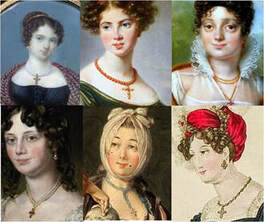
Further, does it make artistic sense to introduce the serious theme of slavery in a section describing the preparations for a ball at a country estate? Would Austen mix grim symbolism with passages such as this one, when Austen starts laughing at her heroine: "Upon such expressions of affection [from Edmund] Fanny could have lived an hour without saying another word; but Edmund, after waiting a moment, obliged her to bring down her mind from its heavenly flight by saying, “But what is it that you want to consult me about?” It was about the necklace, which she was now most earnestly longing to return..."
And finally, what is the message? By wearing the cross and chain, is Fanny complicit in slavery, or is she protesting it?
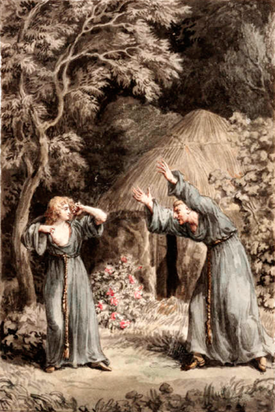 Sex and violence in the Gothic: The Monk
Sex and violence in the Gothic: The Monk Just how sexy is a cross and a chain? We're talking about English Anglicans here, not Spaniards, for heaven's sake. This isn't some steamy Gothic novel with a deranged monk or a sadistic abbess creeping down a secret corridor.
Despite the inherent limitations, Heydt-Stevenson does her best to sex up her argument. The amber with which the cross is made is smooth and sensual. Also, the episode where Fanny consults Mary Crawford about her attire for the upcoming ball is filled with sexual menace. Mary's references to Fanny's "lovely throat" are "sly violence," Mary's a "bawd," she "objectifies" Fanny "sexually," Fanny is a "purchasable item," "Henry's chain [necklace, actually] becomes a painfully obvious signifier of entrapment," etc., etc.
Moving on to our climax: Fanny reluctantly takes the gift but discovers that Henry’s necklace is too big to fit through the ring of William’s cross. Well, that was too easy, right? That’s nothing! Wait until you read Maria Edgeworth’s The Absentee (1812) and get to the part about Lord Colombre “ejaculating over one of Miss Nugent’s gloves.”
How does the notion that the chain and cross represent either slavery or sexual bondage make sense narratively or symbolically? As Austen states in the text, Fanny is delighted to be wearing the cross and chain. She loves the men who gave her the cross and chain. Nothing bad happens to or with the cross and chain. Henry's necklace, on the other hand, makes Fanny uncomfortable--and Austen says so. She can't take a gift from someone she doesn't wholeheartedly like without feeling awkward, and she doesn't like Mary. Worse, the necklace was originally bought by Henry, and she likes him even less, and it's improper for her to be accepting a gift of jewelry from him. Isn't that enough meaning for one necklace?
Speaking of symbolism, for Christians, the cross represents the sacrifice and resurrection of Jesus and the promise of salvation for the faithful, or as Heydt-Stevenson puts it, the cross has "spiritual connotations." She correctly notes that "Austen does not emphasize" those connotations. However, a writer crafting novels for the general public in the early 19th century would think twice before publishing something that associates the cross of Christianity with sex. And then they wouldn't do it, because if they did, there would be outrage. Or, if Austen did intend it, she could have thanked her lucky stars that nobody "got" the sexual allusion for 160 years, when it was first proposed in a 1975 article by scholar Alice Chandler.
| Back in 1894, sexual and slavery connotations were miles away from Agnes Reppelier's mind when she wrote how she "love[d] to think" that Fanny's cross was Jane Austen's loving call out (to use the modern term) to her little brother Charles, who had gifted Cassandra and Jane with topaz crosses. | “I love to think of Jane Austen’s young sailor brother, her ‘own particular little brother,’ Charles, spending his first prize money in gold chains and ‘topaze crosses’ for his sisters. What prettier, warmer picture can be called to mind than this handsome, gallant, light-hearted lad--handsomer, Jane jealously insists, than all the rest of the family—bringing back to his quiet country home these innocent trophies of victory? Surely it was the pleasure Miss Austen felt in that ‘topaze’ cross, that little golden chain, which found such eloquent expression in Fanny Price’s mingled rapture and distress when her sailor brother brought her the amber cross from Sicily, and Edmund Bertram offered her, too late, the chain on which to hang it. It is a splendid reward that lies in wait for boyish generosity when the sister chances to be one of the immortals, and hands down to generations of readers the charming record of her gratitude and love.” -- "Gifts," In the Dozy Hours |
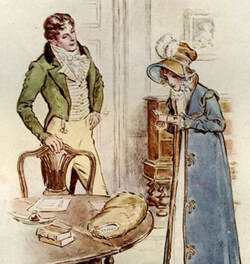 Edmund's gift of a gold chain -- dark connotations?
Edmund's gift of a gold chain -- dark connotations? One way to test an assertion about an interpretation of a novel is to ask: has any other author of the same era done the same thing? Is Mansfield Park the only novel which has used the material object of a cross and a chain for narrative or symbolic purposes? I found another example, a 1811 sentimental short story translated from the French. A long-lost son finds his mother and he gives her a cross and chain, a gift from his wife which was intended for his sister, who he discovers has died. Everybody cries.
Okay, so does this mean that the sister was a sexual object or indifferent to slavery? Or the wife? Or the mother? But nobody is pestering deep meanings out of Marcellus, or the Old Cottager because few authors apart from Austen get this kind of hyper-focus.
Many other novels have used gifts of jewelry. In Jane Porter's immensely popular 1802 novel Thaddeus of Warsaw, the titular hero receives a parting gift from his friend Adeliza Tinemouth. Lady Tinemouth has motherly feelings for him, but the chain represents a lover's feelings: “Wear the enclosed gold chain for my sake; it is one of two given me a long time ago by Miss Beaufort. If I have not greatly mistaken you, the present will now possess a double value in your estimation." She adds that Miss Beaufort has a "generous interest" in his fate.
Lady Tinemouth has guessed rightly, Thaddeus loves Mary Beaufort, but because Reasons, he can’t declare his love. “'Yet this treasure!' [he cries], fondly clasping the separated bracelet in his hand; 'it will, indeed, be a representative of both [Lady Tinemouth and Mary]—honored, beloved—to this deserted heart!'
“He put the chain round his neck, and, with a true lover-like feeling, thought that it warmed the heart which mortification had chilled…”
Thaddeus of Warsaw has to do with the subjugation of the Poles by the Russians in the 1790s, and the military leader on whom the novel is based was an abolitionist, but is any reference to slavery intended here by the word "chain"? Is anything intended apart from a gift from one person, which is really a gift from another person, as a signifier of undeclared love? Does the gift remind Thaddeus of two people he loves, just as the cross and chain signify to Fanny, or are we thinking of the clink of chains around the limbs of enslaved people?
Finally, Austen does in fact make symbolic use of William's chain, but I believe she's simply contrasting the ornate design of Mary and Henry's necklace (those fancy city folks!) to the "plain gold chain, perfectly simple and neat," which suits her tastes better.
The fancy necklace versus plain gold chain symbolism supports Austen's narrative, while Heydt-Stevenson and Kelly are undermining--excuse me, "subverting"--what's going on in the narrative.
I think Heydt-Stevenson's sexual interpretation is vulgar and silly. However, it's a bit more complicated with the slavery/chain symbolism because in one sense, Kelly is right. People used the word "chain" to reference being enslaved, and further, they weren't always talking about actual enslaved people in the West Indies, when they talked about slavery. They used "slave" and "chains" to refer to love.
| This type of allusion is right there in Mansfield Park. Mary Crawford speaks of her brother glorying in his chains. In the 1817 novel Modern Manners, chains of love are explicitly compared to slavery's chains, but not, I think, as a protest of slavery. It's just a romantic conceit of the time: “A few couples were raised, and Mr. Fitzgerald led out Amelia. Many were the shrewd remarks passed on the attention paid her, and on the gold chain to which her eye-glass was appended coming unclasped, and Mr. Fitzgerald taking it up, and gallantly throwing it round his neck, with a sighing speech in which something about 'wearing her chains' was heard; it was proclaimed a “done thing,” Try to imagine a world with plantations and enslaved Africans where people also blithely spoke of slavery and chains in terms of being in love, and you've got Georgian and Regency England. | Problematic: "So tighter! Pull them tighter! 'Til I feel that sweet pain. 'Cause these chains of love keep me from going insane." |
It might just be the chains of love. But "love" doesn't feature much in Kelly or Heydt-Stevenson's interpretations of Austen.
| | Heydt-Stevenson lays out her theories in “‘Slipping into the Ha-Ha’: Bawdy Humor and Body Politics in Jane Austen’s Novels.” Nineteenth-Century Literature 55, no. 3 (2000): 309–39 and in her book, Jane Austen's Unbecoming Conjunctions: Subversive Laughter, Embodied History. United Kingdom, Palgrave Macmillan US, 2016. The sexualized interpretation of putting a chain through the ring of the cross originated in an article by Alice Chandler: "However, no one to my knowledge has pointed out that the rakish Henry Crawford's chain is too big to fit through the hole in Fanny's cross but that her beloved Edmund's chain slips through quite nicely." Chandler, A. (1975). "A pair of fine eyes": Jane Austen's treatment of sex. Studies in the Novel, 7(1), 88. For more on my techniques for testing modern literary theories, see this post. | Problematic: Chains, well, I can't break away from these chains I can't run around / Cause I'm not free Whoa, oh, these chains of love Won't let me be, yeah |
Yes, there was plenty of bawdy humour around, especially in Georgian times, but Austen was a lady. Ladies didn't make coarse jokes in public. Nor did Austen take as bleak a view of the relations between the sexes as Heydt-Stevenson ascribes to her. I will not crawl over everything I object to in Heydt-Stevenson's book, but I am going to do a deep dive on two other arguments from Unbecoming Conjunctions in future.
Previous Post: Seraphina the lively heroine Next post: A Three Volume Hero named Edgar
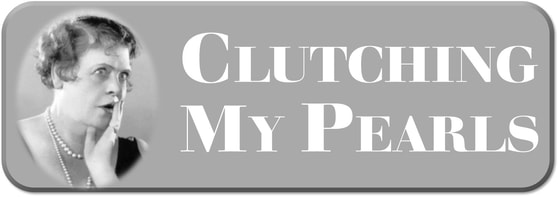
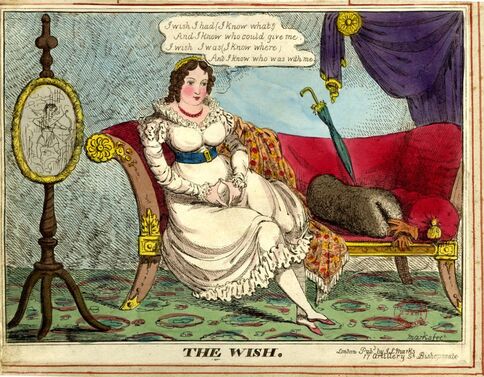
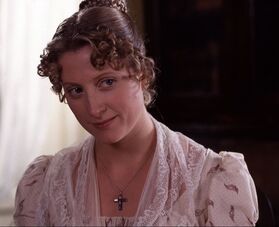
 RSS Feed
RSS Feed